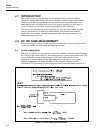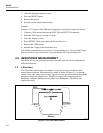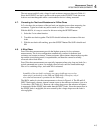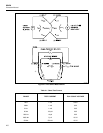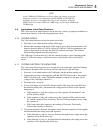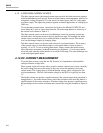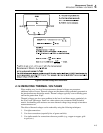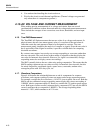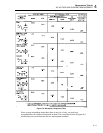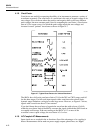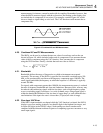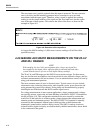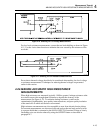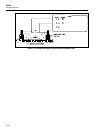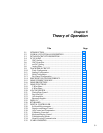
8842A
Instruction Manual
4-10
4. Use caution when handling the circuit under test.
5. Wait for the circuit to reach thermal equilibrium. (Thermal voltages are generated
only where there is a temperature gradient.)
4-15. AC VOLTAGE AND CURRENT MEASUREMENT
When making precise measurements of ac voltage and current, there are several
considerations in addition to those discussed under dc voltage and current measurement.
These include the concepts of rms conversion, crest factor, bandwidth, and zero-input
error.
4-16. True RMS Measurement
The True RMS AC Option measures the true rms value of ac voltages and currents. In
physical terms, the rms (root-mean-square) value of a waveform is the equivalent dc
value that causes the same amount of heat to be dissipated in a resistor. True rms
measurement greatly simplifies the analysis of complex ac signals. Since the rms value is
the dc equivalent of the original waveform, it provides a reliable basis for comparing
dissimilar waveforms.
By contrast, many meters in use today use average-responding ac converters rather than
true rms converters. The scale factor in these meters is adjusted so that they display the
rms value for harmonic-free sinusoids. However, if a signal is not sinusoidal, average-
responding meters do not display correct rms readings.
The 8842A actually derives the rms value using analog computation. This means that the
8842A readings represent true rms values not only for harmonic-free sinusoids, but also
for mixed frequencies, modulated signals, square waves, sawtooths, random noise,
rectangular pulses with 10% duty cycle, etc.
4-17. Waveform Comparison
Figure 4-6 illustrates the relationship between ac and dc components for common
waveforms, and compares readings for true rms meters and average-responding meters.
For example, consider the first waveform, a 1.41421V (zero-to-peak) sine wave. Both the
8842A and rms-calibrated average-responding meters display the correct rms reading of
1.00000V (the dc component equals 0). However, consider the 2V (peak-to-peak) square
wave. Both types of meter correctly measure the dc component (0V), but only the 8842A
correctly measures the ac component (1.00000V). The average-responding meter
measures 1.110V, which amounts to an 11% error.



